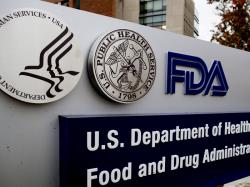FDA Releases 2017 Food Code
February 13, 2018 | 2 min to read

The U.S. Food and Drug Administration announced today the release of the 2017 edition of the FDA Food Code, a model regulation that provides all levels of government and industry with practical, science-based guidance and manageable provisions for reducing the known risks of foodborne illness.
The Food Code is a key component of the Federal public-health focused framework for maintaining a safe food supply. It represents FDA's best advice for a uniform system of provisions that address the safety and protection of food offered at retail and in food service, and has been widely adopted by state, local, tribal and territorial regulatory agencies that regulate restaurants, retail food stores, vending operations and food service operations in schools, hospitals, nursing homes, and child care centers.
The 2017 Food Code provides uniform standards for retail food safety, eliminates redundant processes for establishing food safety criteria, and establishes a more standardized approach in controlling food safety hazards within a retail environment.
Significant changes to the 2017 Food Code include the following:
- Revised requirement for the Person in Charge (PIC) to be a Certified Food Protection Manager (CFPM) (Section 2-102.12)
- Added a new section that addresses the use of bandages, finger cots or finger stalls (Section 2-401.13)
- Harmonized cooking time/temperature parameters for intact and non-intact meat and poultry in accordance with guidance from the U.S. Department of Agriculture’s Food Safety and Inspection Service (USDA-FSIS) (Section 3-401.11)
- Updated procedures for retail food establishment operations to continue during an extended water or electrical outage if a written emergency operation plan has been pre-approved by the Regulatory Authority, immediate corrective action taken and the Regulatory Authority has been notified upon implementation of the plan (Section 8-404.11)
The 2017 edition reflects the input of regulatory officials, industry, academia, and consumers that participated in the 2016 meeting of the Conference for Food Protection (CFP). Collaboration with the CFP and our partners at the USDA-FSIS and the Centers for Disease Control and Prevention helps ensure the Food Code contains sound requirements that would prevent foodborne illness and injury and eliminate the most important food safety hazards in retail and foodservice facilities.
Members of FDA’s National Retail Food Team are available to assist regulatory officials, educators, and the industry in their efforts to adopt, implement, and understand the provisions of the FDA Food Code and the Retail Program Standards. Inquiries may be sent to retailfoodpolicyteam@fda.hhs.gov or directly to a FDA Retail Food Specialist located across the country.
The 2017 FDA Food Code is available on the FDA website at http://www.fda.gov/FoodCode.
Source: FDA
